2016 Environmental Merit Award Recipients
- Dedication
- Welcome
- Ira Leighton "In Service to States"
- Lifetime Achievement
- Individual
- Business, Industry, Trade or Professional
- Environmental, Community, Academia, & Nonprofit
- Governmental/Children's Environmental Health
- Federal Green Challenge
- President's Environmental Youth Award (PEYA)
- Special Recognition
- Special Thanks
Dedication
Paris COP 21 Agreement
This 2016 Environmental Merit Awards is dedicated to the historic Paris COP 21 agreement. Over 190 nations committed to universally limit global warming. The agreement is a strong starting point and promotes action over time that will protect this planet from the impacts of climate change.
Welcome
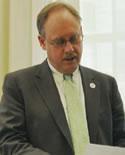
Welcome to the 2016 Environmental Merit Awards Ceremony
Congratulations to all of EPA New England's 2016 Environmental Merit Award Winners! We give out these awards annually, and I have been lucky enough to do this for the past six years. It is wonderful to be able to honor New Englanders for on-the-ground environmental work across sectors. In my time here, we have awarded community leaders, climate activists, scientists, government officials, business leaders, pro-sports teams and many more. These awards represent a variety of professional sectors; states and communities. This year is a special year. We have a particularly excellent group of winners this year, who will be the last group of winners I get to award.
The Environmental Merit Awards brings together a community of environmental stewards from around New England. This is a community that should feel as excited I do about the work being done to combat climate change around the globe. The Paris Agreement signing in December signified global momentum to reduce our carbon footprint, and leave our kids with a safe, healthy environment to live in. This is an opportunity for all of us who work on environmental protection to come together, be creative and implement sustainable, cost-effective environmental solutions.
I am so happy to celebrate your work and your progress on the environment today. It is an honor to be recognized on this stage, and we couldn’t be happier to be here with you. At EPA, we are very proud of your work, and we hope your efforts will continue into the future. Thank you for being such strong environmental stewards.
Congratulations to all of today's winners.
Sincerely,
Curt Spalding
Regional Administrator, EPA New England
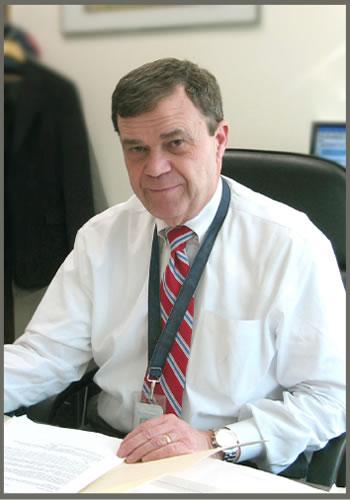 Ira W. Leighton, Jr.
Ira W. Leighton, Jr.1945-2013
Dedicated EPA public servant since 1972
"Over more than four decades of service, Ira's leadership brought innovative solutions to America's conservation challenge and he will be remembered for this commitment to making our environment safer and healthier."
- President Barack Obama
A true friend, a mentor and a lover of New England.
He will be missed.
Ira Leighton "In Service to States" Annual Award
The New England Interstate Water Pollution Control Commission (NEIWPCC), the Northeast States for Coordinated Air Use Management (NESCAUM), the Northeast Waste Management Officials' Association (NEWMOA), in coordination with the New England state Environmental Commissioners and the United States Environmental Protection Agency, Region 1 (EPA) have initiated the Ira Leighton "In Service to States" Environmental Merit Award as a tribute to our long-time colleague and friend, Ira Leighton, who passed away in 2013, after serving forty-one years at the US EPA. Ira's dedication and passion for protecting the environment was evident to all who knew him. He was a constant presence in New England; a force who took ideas and made them actionable tasks that resulted in measurable improvements.
Saluting the Ira Leighton "In Service to States" Annual Award Recipient
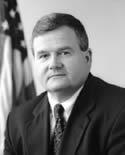
Robert Varney
Robert Varney is nationally recognized for a wide range of environmental achievements, including his efforts on global climate change, energy efficiency, integration of energy and environmental programs, clean air, clean water, safe drinking water, and environmental justice. Varney, currently serving as president of Normandeau Associates, manages one of the largest science-based environmental consulting firms in the country. Before he took this job, he was Regional Administrator of the New England office of the Environmental Protection Agency for more than seven years. During his time at EPA, he helped achieve high-profile settlements to clean up and restore the Charles River, South Boston beaches, Mt. Hope Bay, Portsmouth Harbor, and portions of the Connecticut, Merrimack, and Assabet rivers. Before coming to EPA, Varney was for 12 years Commissioner of the NH Department of Environmental Services, where he improved internal management and successfully undertook many legislative initiatives, improved communication with the legislature, municipalities and professional groups, and was widely credited with instituting innovative approaches and policy initiatives that were national models. As New Hampshire state planning director before that, Varney led the preparation of the state's first regional recycling plan and developed the Merrimack River Management Plan, as well as a long-range water supply plan for the growing southern tier of New Hampshire. He was a member of the NH Board of Trustees for The Nature Conservancy, and an Obama appointee to the Commission for Environmental Cooperation's Joint Public Advisory Committee. His list of memberships goes on: State/EPA Superfund Policy Forum, Federal Ozone Transport Commission, Gulf of Maine Council on the Marine Environment, New England Interstate Water Pollution Control Commission, and New England Governors' Conference Environment Committee. Varney's list of awards is equally impressive. He received an EPA Lifetime Achievement Award, NE Water Works Association's John H. Chafee Award, Charles River Watershed Association's Anne Blackburn Award, the Environmental Business Council of New England's Paul Keough Award, and the Founder's Award of the Environmental Council of States.
Lifetime Achievement
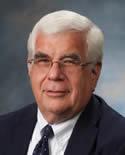
Robert Moore
Connecticut
Robert Moore has played a major role in shaping the environmental history of Connecticut. Many of the state's environmental programs, including its Environmental Justice Policy, Water Diversion program, Brownfield program, pesticide management programs, and Superfund program, were developed under Bob's leadership.
Moore's entire working life, including 25 years with the Connecticut Department of Environmental Protection and more than 10 years with the Metropolitan District Commission, has been dedicated to environmental protection.
Moore started with the Connecticut Water Resources Board as Director of Water Compliance, and worked his way up to Chief Operating Officer of DEP. He developed and put in place the state's ground water program. He was instrumental in Connecticut's nitrogen reduction strategy, including the award-winning nitrogen trading program, as well as the development of the state plan for complying with Connecticut's Clean Air Act.
In addition, Moore oversaw Connecticut's recycling program and solid waste management plan, initiated its Urban Site Remediation Program, and established its Clean Water Fund, which has funded more than $1.5 billion of water infrastructure improvements. Many of these programs have been models for other state programs.
Moore's commitment to the environment continued as he moved to the MDC as Chief Administrative Officer, responsible for developing a $2.1 billion combined sewer overflow program, and a $2.5 billion drinking water program. In addition to providing water and sewer service, the commission also maintains parks and facilities and manages more than 30,000 acres of watershed land.
Moore has served on numerous boards and committees related to the environment, including the State Emergency Response Commission, the Association of State and Interstate Water Pollution Control Administrators, the New England Water Pollution Control Commission, the Connecticut 208 Areawide Water Quality Management Planning Board, and the Farmington River Wild and Scenic River Study Committee. As current Chair of the Policy Subcommittee of the Connecticut State Water Plan Steering Committee, Moore will continue to play a key role in water planning in Connecticut.

Margaret Miner
Connecticut
In nominating Margaret Miner, US Sen. Chris Murphy called her "a true champion of the planet." Since 1992, Miner has been Executive Director of the Rivers Alliance of Connecticut, a non-profit that protects rivers and streams in Connecticut by promoting sound river-conservation policies and helping watershed protection groups statewide. Miner has spent numerous days walking the legislature's hall, going from meeting to meeting to testify on legislation affecting environment. Miner is an environmental activist who provides advice and guidance on a range of environmental policy.
Under Miner's leadership at the Rivers Alliance, Connecticut in 2005 passed vanguard legislation requiring the state to adopt flow standards for all rivers and streams. In 2011, the first phase of the flow regulation was adopted. And in 2014, the state for the first time passed a law requiring comprehensive water planning. The Rivers Alliance is fully participating in the statewide water planning process and has extended its goals to the protection of both quantity and quality in headwaters and ground water. In addition, the Alliance helped found the State Lands Working Group, which protects conserved lands. During her years as Director, Rivers Alliance has run conferences twice a year, maintained a webpage of conservation news and been a clearinghouse for information on creating and using water trails in Connecticut. With Miner at the helm, the River Alliance has helped individuals and organizations trying to protect the state's waters, often fighting city hall. The organization's helpline guides individuals and groups striving to protect water resources. Throughout her 25 years at the Rivers Alliance, and before that directing the Roxbury Land Trust, Miner has made a difference by organizing countless people to get involved in her cause, while helping to shape public policy and opinion.

Martin "Tin" Smith
Maine
The Board of Directors of the Great Works Regional Land Trust, along with its staff and nearly 1,000 active members, nominated Tin Smith for a Lifetime Achievement Award. Smith has been a visionary and tireless leader in environmental protection and land conservation in southern coastal Maine for 35 years.
It was 30 ago that a group of citizens concerned about the impacts of rapid development in southern York County, Maine, formed The Great Works Regional Land Trust. Smith took an immediate leadership role, using his existing contacts in the conservation field to educate the novice volunteer board.
Smith continues to be the heart and soul of the Land Trust. In addition to his role as President of the Land Trust Board for 10 years, he has led the way on many individual projects. Thanks largely to his perseverance, the Land Trust has completed 119 land purchases or easements, thus protecting 5,974 acres of valuable land in the six southern Maine towns served by the trust.
Smith was one of the first to advocate for preserving the unique ecosystem of the 30,000-acre Mount Agamenticus area. Knowing collaboration would be key, he helped lead the effort to bring towns, land trusts and conservation groups together to form the Mount Agamenticus to the Sea Coalition.
Smith has made invaluable contributions to numerous other environmental conservation efforts as well. He was part of a core group in the early 1980s who worked to protect the land and buildings that are part of the former Laudholm Farm and to create the Wells National Estuarine Research Reserve. He has been active in the Maine Organic Farmers and Growers Association for 30 years, serving on the board of directors and providing hundreds of volunteer hours.
On top of all of Smith's professional efforts, every fall he and his wife, Jane, host a harvest festival at their organic apple grove. Community members gather to pick apples, make cider, enjoy a meal prepared by Jane, and celebrate nature and community. It is hard to overstate the positive environmental impact Tin Smith's leadership and dedication have had within this region.

Raymond J. Raposa
New England
For more than 30 years, Raymond Raposa has been Executive Director of the New England Water Works Association, a non-profit research and philanthropic organization. During his tenure, he guided the association from a small volunteer endeavor to one with more than 2800 active members. One of his greatest accomplishments is establishing more than 300 certified training courses to improve the education and professional standing of drinking water operators throughout New England.
The Water Works Association now delivers programs, conferences and special events through the efforts of 13 staff, adjunct instructors and a large volunteer committee.
In addition, Raposa started the Spring Conference and Exhibition held in Worcester, sponsored by a host of New England water works organizations and agencies, and drawing over 3000 attendees. Raposa has been a leader from the beginning. In the mid-1990s, he put together a coalition of environmental groups and water works organizations to create the New England Safe Drinking Water Act Task Force, which made comments that were incorporated into the reauthorization of the Federal Safe Drinking Water Act. Today, the association also is an instrument of change, advancing knowledge, science, government awareness, public trust, and environmental stewardship of the water works profession.
EPA New England has relied on Raposa and the New England Water Works Association as a partner on critical drinking water issues in a collaboration that has created national models.
Under his leadership and vision, the New England Water Works Association has inspired excellence in the drinking water profession, public confidence in tap water, and water resource stewardship by promoting public health, safety, quality of life, and environmental stewardship. Through education, training, advocacy, and outreach relating to safe drinking water, Raposa has made a difference to the thousands of water operators and the millions of citizens who rely on this profession for clean and safe water.
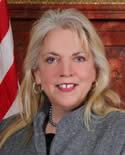
Senator V. Susan Sosnowski
Rhode Island
Twenty years ago, Susan Sosnowski became the first woman to serve in the Rhode Island Senate, representing South Kingstown and Block Island. A lifelong farmer, Sen. Sosnowski brought a keen awareness of environmental and agricultural issues, and quickly emerged as a passionate leader on such issues as climate change, land conservation, and the promotion of a sustainable, local food system.
As Chair of the Senate Agriculture and Environment Committee, Sen. Sosnowski is an outspoken proponent of expanding Rhode Island's green economy, strengthening its resilience, and supporting healthy communities and waters, all while remaining rooted in the farming community. The Rhode Island Farm Bureau recently recognized her efforts to support local agriculture and help farmers navigate the regulatory processes.
Sen. Sosnowski co-sponsored and was instrumental in the passage of the 2014 law establishing an Executive Climate Change Coordinating Council. Last fall, Rhode Island adopted a first-of-its-kind energy plan that sets ambitious goals for fuel diversity, greenhouse gas emissions reductions, and economic benefits. Today, Rhode Island is ranked the fourth most energy efficient state in the nation, according to the American Council for an Energy-Efficient Economy, and its clean energy economy supports nearly 10,000 jobs. This would not have happened without Sen. Sosnowski's leadership.
In 2015, Sen. Sosnowski introduced legislation to establish a dedicated funding stream for a grant program that supports food-based innovation and business development. The program has funded more than 30 businesses and initiatives. She has been a consistent champion of the value of Rhode Island's commercial fisheries. In 2012, she joined other state leaders in supporting the creation of the Rhode Island Seafood Marketing Collaborative, which brings together government, academia, and industry to support local fishermen and distributors.
Sen. Sosnowski also championed legislation that would update Rhode Island's school nutrition standards, and as a result of this enacted legislation, has been recognized by the American Heart Association. Additionally, Sen. Sosnowski has led legislative efforts to clean up marine debris, better manage invasive species, improve dam safety, promote composting and stricter recycling standards, and ban antiquated wastewater systems. Most notably in 2015, she was the key sponsor to pass a law that accelerates the removal of cesspools statewide.
Sen. Sosnowski is a stalwart environmental advocate. Her bold thinking and committed leadership have led to tremendous progress for Rhode Island.

Eric Smeltzer
Vermont
During his 35 years at the Vermont Department of Environmental Conservation, Eric Smeltzer made many major and lasting contributions to lake restoration and protection in Vermont. As State limnologist – one who studies inland waters – Smeltzer served as Vermont's top lake scientist, guiding lake management strategies, conducting numerous lake studies and modeling analyses, mentoring young lake scientists, and advising governors, legislators, and other policy makers on lake science and lake restoration.
Throughout his career with the DEC, Smeltzer was widely respected for his scientific expertise, patient and professional public presentations on controversial and complex topics, clear writing, and consistent, science-based advocacy for lake protection and restoration.
Restoration of Lake Champlain was a major focus of his career. In collaboration with colleagues from New York State, Smeltzer initiated the long-term lake monitoring program that has generated an immensely valuable record of biological, chemical, and physical parameters across the lake's diverse segments and tributaries. This record has allowed for important analyses of water quality trends over the last two decades. Smeltzer also spearheaded the adoption of consistent water quality standards by the governments of New York, Quebec and Vermont for each of the lake's 13 segments.
Smeltzer's most monumental contribution to Lake Champlain was arguably his development and application of the lake water quality model used in establishing phosphorus reduction targets in lake clean-up plans. Building on the modeling results, Smeltzer guided DEC's development of the initial Lake Champlain Total Maximum Daily Loads in 2002, and then, from 2011-2015, provided technical support to EPA in developing the 2016 update. While restoration of Lake Champlain remains a major challenge, Smeltzer built a foundation that will guide lake restoration work into the future.
Smeltzer served with distinction on various technical advisory committees and lake management task forces. His scientific reports and articles will inform future generations of lake scientists and managers. Smeltzer's strong environmental ethic also extends to his personal life. He and his family have lived "off the grid" for three decades, using on-site wind and hydro power to provide energy to their Vermont home.

Robert (Bob) McMahon
Rhode Island
Bob McMahon retired as Superintendent of Providence's Parks Department in 2015 after almost 30 years of public service, most of them with the city of Providence. During his tenure, McMahon oversaw and often led projects that contributed to a better quality of life for Providence, especially for communities burdened by pollution and neglect. His list of accomplishments ranges from installing neighborhood splash parks to navigating a major stormwater and water quality restoration effort at Roger Williams Park. He was instrumental in ensuring that access and amenities for the public were included in development and restoration projects such as River Walk, the Woonasquatucket River bike path, and WaterPlace Park. With his advocacy, Providence now has thriving farmers markets and community gardens. Thousands of trees have been planted, and the city has piloted ways to incorporate green infrastructure into park maintenance and upkeep.
McMahon was integral to the modernization of the Roger Williams Zoo, helping make it the first zoo in New England to earn accreditation from the Association of Zoos and Aquariums. He also oversaw the building of the new Botanical Center, which brings environmental information to the public on topics such as rain gardens, pollinators, and landscaping with nature.
In a more directly environmental area, Bob worked with the Narragansett Bay Estuary Program, which agreed to receive and manage a $424,000 grant that had been sitting unclaimed by the city for several years. Together the city and estuary program developed a project to address the degraded water quality in the Roger Williams Park pond system. With additional EPA support, McMahon helped get a bio-infiltration unit installed that captures some 2.6 million gallons of stormwater runoff each year at the park. Design and construction of more than 70 neighborhood park improvement projects, 11 water splash parks, nine community gardens, 25 walking tracks, 40 park stewardship groups, support for bike paths, and a new boat ramp to the Seekonk River are just some of the tangible and lasting evidence of Bob's contributions to a better environment for Providence.

Roger Frymire
Massachusetts
With his kayak strapped faithfully to the roof of his car, Roger Frymire is a reliable and resourceful volunteer for the Mystic River Watershed Association. For the past 20 years, Frymire has monitored water quality for the association. He helped design and put in place monitoring programs that illuminate environmental conditions in the watershed, and his work has brought attention to the Mystic River, Malden River, Aberjona River, Chelsea Creek, Alewife Brook and the Mystic Lakes. Beginning in 1999, Frymire helped the Mystic Monitoring Network develop into one of New England's finest water quality monitoring programs. Frymire volunteered countless hours collecting water samples and, as part of the Mystic Monitoring team, shared his important insight into monitoring design and data control.
In addition, Frymire was a one-man "find it and fix it" team. In his own words, he is a "retired codger who enjoyed kayaking but didn't think rivers should smell like cesspools." On many kayak trips, Frymire took more than 2000 samples for fecal bacteria analysis to identify the sources of the problems, bring attention to water conditions and get the problems solved. His efforts helped the rivers and led to many victories in the Mystic. Frymire has received multiple awards from environmental groups and the city of Cambridge.
Frymire began sampling with the Charles River Watershed Association and soon after began working in the Mystic, Merrimac and Salem Sound watersheds. He worked in every kind of weather and in every season. He was a consultant to USGS, EPA, the Army Corp of Engineers, the US Geological Survey, the state and the Center for Watershed Protection, and has given expert testimony at countless public hearings and meetings. His work has been featured on TV; in the Boston Globe; on NPR's Living on the Earth; and in Mother Jones magazine, as well as numerous other publications. In these stories, Frymire always turns attention from himself to focus on the environment and on local non-profit advocates. With this Lifetime Achievement Award, EPA and the environmental community offer sincere thanks to Roger Frymire for his dedicated stewardship.

Honorable Michael J. McGlynn
Massachusetts
As the longest serving mayor in Massachusetts, Michael J. McGlynn was Mayor of Medford, Massachusetts from 1987 until his retirement last year. His progressive leadership on energy and environmental issues spanned almost 20 years of policies and programs. Under McGlynn's leadership, the city saw a long list of achievements. Among the most notable was the 2009 construction of a wind turbine that provides 10 percent of the power for the McGlynn School, saving $25,000 a year in electric bills and providing enough energy to offset about 133 tons of greenhouse gas emissions. In addition, Medford was the first EPA Clean School Bus Project recipient in the country to not only manage the program for Medford, but also for 12 other regional communities served by the same bus company. The city had the first Municipal Climate Action Plan in the state, and received the 2004 EPA Clean Air Excellence Award for its innovations to reduce greenhouse gas emissions.
Under McGlynn's leadership the city also put into place a solar program that resulted in Medford residents contracting 322 kilowatts of solar power. The city was recognized for its recycling and sustainability practices, its energy and environmental initiatives, as well as its Go Green Medford initiative. During nearly three decades of leadership, Mayor McGlynn made a lifetime of difference for the city of Medford.
Individual
Mayor Neil M. O'Leary
Waterbury, Connecticut
Mayor Neil O'Leary is being recognized for leadership and vision for brownfields redevelopment and community revitalization in Connecticut's fifth largest city. Known as the Brass City because of its industrial past, Waterbury faces a legacy of hazardous materials and petroleum contamination as it struggles with poverty, foreclosures, crime, and job loss. The city has about 200 brownfields, many along the city's waterways. O'Leary's track record of brownfields success began when he was police chief and had a vision for a new park and ballfield at the Police Activity League complex. O'Leary's focus on results helped guide the project team through to complete the park last year. The complex has been instrumental in transforming a once blighted neighborhood into a vibrant neighborhood focused on improving the lives of local youth. As mayor, O'Leary set his sights on other critical brownfields. By tackling complicated environmental cleanup in a manner consistent with the needs of industrial tenants, his team managed to get manufacturers who had planned to leave to instead remain and even expand. In addition, by championing the city's local work force, he attracted new manufacturing companies and more than $40 million in private investment. Most recently, O'Leary built support for an expansive redevelopment of the Freight Street District, which includes the city's train station. This project, involving challenging brownfields issues, offers the promise of a renaissance, transforming dozens of acres of brownfields into new transit-oriented developments. O'Leary exemplifies the leadership and passion for success necessary to develop brownfield sites.
Michael Chavez and Trevor Smith
Dorchester, Massachusetts
Architectural designer Michael Chavez, and landscaper Trevor Smith, did ground-breaking work to promote street-level, green roofs in the City of Boston. These "living roofs" are perched on bus shelters, including in the Talbot Norfolk Triangle Eco-Innovation District, South Boston and Hyde Park. Each of these soaks up rainwater, absorbs carbon, beautifies neighborhoods, provides a cool area at bus shelters on summer days, provides jobs for those who install and maintain these mini gardens, and educates the community about the importance of urban green infrastructure. These installations were possible because of the leadership, creativity, and dedication of Chavez and Smith. Begun as a pilot effort two years ago, Chavez and Smith teamed up with public and private partners to expand the educational demonstration of what the eco-friendly future will hold along the Fairmount Corridor. They're spreading the message of the need for additional green infrastructure while filtering and reducing stormwater that enters the city's infrastructure in low-income communities. The successes of the team's original bus shelter installations now are being amplified beyond the scope of their initial efforts. Local youth have been trained to do the construction and maintenance of the living roofs. Boston is now a leader for installation of green roofs on bus shelters in the country.
Anne Maherakis, Jodie Hollister, and Scott Sheehan
Hanscom Rides Partnership
Congestion and poor air quality are two major challenges in Boston. In July 2014, three very different entities joined forces to tackle Boston's congestion and air quality, while at the same time helping meet their organization's greenhouse gas reduction goals. Hanscom Air Force Base and MIT Lincoln Laboratory, neighbors in Lexington, Lincoln, and Bedford, Massachusetts, wanted to reduce their emissions. Anna Maherakis, transportation coordinator at Lincoln Labs, and Scott Sheehan, an environmental engineer at Hanscom, and began meeting with Jodie Hollister, New England account manager for vRIDE, in 2014. Together they created and rolled out a combined commuter management program called "HanscomRIDES." Over the next 18 months, the three spent an average of 65 hours each week to build and promote the program through transportation fairs, appreciation picnics, an online ride matching service, newspaper articles, brochures and in-house education. The results in the first year alone were astounding. The number of vanpools going to Hanscom AFB and MIT Lincoln Laboratory increased from six in July 2014 to 48 as of early 2016. Of the 107 registered vanpools in the state, 48 of them go to the small suburbs of Bedford and Lexington through HanscomRIDES. As a result of their success, the three have been invited to discuss their program with town and city officials, the 128 Business Council, state representatives and the Middlesex Transportation Management Association.
Veronica Eady
Conservation Law Foundation
Veronica Eady, Vice President and Director of the Conservation Law Foundation in Massachusetts, is being honored for her work in environmental justice advocacy. Eady has been a fervent proponent of environmental justice policies, especially as they relate to climate change, land restoration, community preservation and reducing exposure to toxics. Eady also has been a strong and effective voice in the areas of food justice and transit equity.
Eady's prior positions as a consultant focusing on environmental justice and human rights issues in Berlin, Germany, as Director of Environmental Justice at New York Lawyers for the Public Interest, as Director of the Environmental Justice and the Brownfields Programs for the Massachusetts Executive Office of Environmental Affairs, and as Executive Director of Alternatives for Community and Environment, have prepared her for her current role with the Conservation Law Foundation. Eady has made significant contributions toward the goal of having all New Englanders enjoy the same degree of protection from environmental health hazards and equal access to the decision-making process so they can live in a healthy environment.
William Boulanger
Dover, New Hampshire
William Boulanger, Superintendent of Public Works and Utilities in Dover, NH, has been a crucial catalyst for reducing negative impacts on the Berry Brook Watershed. The goal of the Berry Brook project has been to use green infrastructure stormwater treatment practices to improve water and habitat quality in a severely degraded urban watershed. Under Boulanger's leadership, researchers at the University of New Hampshire and city staff installed stormwater controls that remove more than 19 tons of sediment, 710 pounds of nitrogen and 127 pounds of phosphorus each year from the watershed. They have reduced the non-porous cover in the watershed from 32 percent to less than 10 percent.
Boulanger's ability to seek practical solutions has helped overcome municipal barriers to green infrastructure and resulted in a greater understanding of stormwater management. When city staff were reluctant to accept green infrastructure, Boulanger addressed their concerns, coordinating with city engineers, laborers and UNH researchers to build systems that can be maintained with the existing equipment, are affordable, and include designs easily understood by city staff. Boulanger also invented a new style of green infrastructure with the water quality and volume reduction benefits of porous asphalt. The new approach was nick-named "Boulanginator."
Boulanger, who has provided outstanding municipal public works service for 42 years, is a master communicator with excellent leadership skills. It is local champions like Bill Boulanger who will lead the green infrastructure wave and who will do it more economically and effectively than anyone ever imagined.
Dr. James F. Haney
Durham, New Hampshire
Dr. James Haney has spent a majority of his career studying cyanobacteria blooms in bodies of water, an increasing problem in New England and worldwide. These blooms are often caused by nutrient sources in the landscape and may result in dense scums on the water surface that can lead to toxins with implications for human and environmental health. Haney has been a key member of New England's regional cyanobacteria monitoring and bloom watch program, which was developed to track harmful cyanobacterial blooms and monitor bloom development. His contributions have been enormous to the success of this program. He has been key in fostering collaboration between non-profit groups, citizen scientists, boards of health, state water quality scientists, water suppliers and academics. With his help, new tools are being developed to predict blooms, and approaches are improving to guide public health officials. Haney has fostered the idea of a multi-tiered participatory approach to the regional program. This program has been well received throughout New England, and is being shared nationally. Haney's willingness to share expertise and innovation freely is an example of selfless commitment to public health and the environment.
Steve Simoes
Vermont Department of Environmental Conservation
Steve Simoes has worked for the hazardous waste program in the Vermont Department of Environmental Conservation for more than 25 years. In this position, Simoes has shown an unwavering commitment to environmental protection as he carries out the regulations of the Vermont Resource Conservation and Recovery Act. His attention to the issues and his experience in the program have allowed Simoes to provide creative solutions to hazardous waste hurdles in Vermont and throughout New England.
Known as the principle drafter of the state's hazardous waste regulations, Simoes' thorough understanding of law and program allowed him to develop clear and effective regulations and to unravel complexities in order to realize the ultimate aim: Environmental protection.
Simoes has been recognized for his work on enforcement cases and enforcement policies, as he understands that laws must be enforceable, and enforced reasonably. He has brought many important actions that have resulted not just in compliance and fines, but also in environmental improvements. His input is sought regularly and he is generous with his time and knowledge. His collaboration across agencies has been a model for state-federal partnerships. As a critical member of multi-agency teams, Simoes has pushed forward best practices for both regulators and the regulated.
In addition to his work maintaining the hazardous waste program, Simoes has shared his passion and knowledge nationally. An unfailing commitment to a safe environment through results and practicality truly is the hallmark of Steve Simoes' career.
Dr. Laura Hill
University Of Vermont, Burlington
Today's students need an understanding of sustainability issues so they can be part of a future that work toward environmental solutions. The University of Vermont is one of the few major research institutions that requires all undergraduates to meet a sustainability requirement as part of their general education. Dr. Laura Hill, a lecturer and research associate in plant biology, provided key leadership in getting this requirement through the faculty senate. Known as modest and quietly charismatic, Dr. Hill shares credit with the committee she co-chairs which both developed the sustainability requirement and reviews for approval courses that may meet that requirement. As the voice of the committee, Dr. Hill gave a compelling presentation to the faculty senate that won over critics in engineering, health sciences, and teacher education, and ultimately gained their approval.
Dr. Hill says her teaching goal for intro biology and plant biology classes "is to make science a tangible and exciting topic." She succeeds by sharing her passion and using a variety of techniques to engage and enthuse students. A former student who nominated Dr. Hill for a UVM teaching award that she ultimately won said "there is such potential in her vision of what teaching can be, fueled by so much creativity and hard work." Dr. Hill has shared her skills with faculty through workshops and on Vermont Public Radio. She also has shared her agricultural research on the future of cold-hardy plant varieties through a television interview, workshops and peer-reviewed publications.
Business, Industry, Trade or Professional
United Illuminating Conservation Load Management Team
Orange, Connecticut
Pat McDonnell
Sheri Borrelli
Amy Mclean-Salls
United Illuminating takes seriously its responsibility to reduce the impact its customers have on the environment. Because energy is its business, United Illuminating is uniquely situated to promote energy efficiency. The company, in funding its Conservation Load Management team, is making its customer base stronger and its resources go further. The Conservation Load Management team at United Illuminating has developed programs that help low income people and Houses of Worship, educate school children, target high energy usage sectors such as waste water treatment plants, and assist municipalities in saving energy and taxpayer money. United Illuminating works with partners to promote these programs and make them successful models that are replicated across the country. Its partners include the Energy Star program, local educational institutions such as the University of New Haven, Norwalk, Connecticut Community College, Eastern Connecticut State University, retail establishments such as Home Depot, and the religious community. The team has benchmarked and audited more than 30 Houses of Worship as part of the "Making a Visible Difference" project in Bridgeport. United Illuminating sponsors the Energize Connecticut Center in North Haven, which brings in busloads of school children for hands-on, interactive education in energy efficiency.
United Technologies Corporation
Farmington, Connecticut
United Technologies Corporation, manufacturer of aerospace products and energy efficient building equipment under a variety of iconic brands, including Pratt & Whitney, Otis Elevator, Carrier, Kidde, and Chubb, has had continuous operations in New England since 1925. Understanding the substantial environmental footprint that factory operations can make, UTC requires all operations annually to reduce their environmental impact operations. As part of UTC's environmental stewardship program, reductions are specified through five year goals and associated annual numeric targets, and businesses are required to reach their targets regardless of business growth. Recent operations have achieved impressive results, and UTC has attained or exceeded nearly all of its goals and targets. In addition to the physical actions taken to meet goals, UTC also engages with its employees to promote broader operational sustainability, routinely hosting Earth Day celebrations at its headquarters and other facilities, sponsoring a variety of employee and green team awards, and annually contributing hundreds of company sponsored volunteer service hours on behalf of community-based environmental organizations.
Penobscot Energy Recovery Company
Orrington, Maine
The Penobscot Energy Recovery Company is a municipal solid waste combustor that accepts more than 300,000 tons annually from 187 communities and waste producers in the region. The company uses a refuse-derived fuel technology, with solid waste shredded for combustion in a biomass boiler, and ferrous metals recovered for recycling. Steam generated from combustion is used to generate 25.5 megawatts of electricity that is sold on the grid. The process reduces the volume of waste by about 85 percent, conserving precious landfill space.
In 2015, some 7,802 tons of ferrous metal was recycled, and another project is nearing completion to recover post-combustion ferrous for recycling. Meanwhile the company has studies underway to identify the feasibility of recovering energy from the 58,082 tons of organic material and grit removed by the process.
Motivated by the excellence of its employees, Penobscot Energy in 2013 began other focused projects, including one to design and put in place a "zero liquid discharge" program that would recycle all process water internally and avoid discharging water to the Penobscot River. The existing wastewater treatment plant was repurposed to treat and recycle wastewater to other parts of the operation. By 2015, the zero liquid discharge goal had been realized. Penobscot believes the process used to reach this goal could be transferred to other small thermal power plants.
Regency Transportation
Franklin, Massachusetts
Last year Regency Transportation set out to consume less diesel fuel by improving gas mileage, changing routes, and reducing idling times. Since driver behavior makes a huge impact on fuel efficiency, the company educated drivers about the consequence of their driving habits on fuel consumption. Regency's efforts paid off with a significant drop in weekly idling hours. A baseline study showed that one quarter of the time trucks ran was spent idling. The hours represented 134 trucks driven by 175 different full and part-time drivers. Through social media, Regency asked drivers to shut their trucks off when parked. Hours spent idling fell the first week. Individual driver results were posted on Facebook. Personal pride and competition took over, and the idling hours continued to improve, but eventually plateaued at a level that didn't satisfy the company. The company asked drivers for ideas. This led to an incentive plan with financial rewards based on individual idling percentages. They targeted 10 percent idling time, and set up plans to reward drivers in relation to their success reducing idling. The company was able to cut idling to 8.77 percent of engine time, down from 25.74 percent when the effort began. Idling time company-wide dropped from 1601 hours to 545 hours weekly. At a gallon per hour, the company saved 55,000 gallons of diesel fuel in one year.
Braun's Express, Inc.
Hopedale, Massachusetts
Braun's Express is being recognized for its 2015 fleet and building sustainability accomplishments. The transportation company is a partner in EPA's Smartway initiative, begun in 2004, which aims to reduce emissions from freight transportation. During that time Braun's Express has grown to 225 employees, eight terminals, and hundreds of trucks and trailers, growth that has brought challenges, such as how to minimize its impact on the environment, mostly from carbon dioxide emissions. Braun's ranks in the second highest of five tiers for emissions, but it aims to do better with its trucks and its buildings. In 2015, Braun's installed a solar array at its corporate headquarters, a symbol of its dedication to the environment. Braun's also has put in place a driver incentive scorecard that lets drivers see their driving behavior for the week, and how it is translated into fuel savings, efficiency, compliance and operating safety. Drivers who reach company goals are financially rewarded. This program also provides managers with information that can be used for preventive maintenance, which in turn improves fuel-efficiency. Braun's continuously has upgraded its fleet to more efficient models to reduce its carbon footprint. It has saved about 18,000 metric tons of CO2, equivalent to 43 million miles driven. This small, family-run trucking business is committed to sustainability, and to evaluating and adopting technologies to reduce its carbon footprint.
Arpin Group, Inc.
West Warwick, Rhode Island
Arpin is a fourth generation family-owned company specializing in domestic and international moving, global information storage management and environmental stewardship, through its subsidiaries, Arpin Van Lines, Arpin International Group, Creative Storage Solutions, and Arpin Renewable Energy. Arpin continues to advance toward a more sustainable future to ultimately manage a company that is in balance with the economy and the environment. Arpin's mission to meet the highest environmental standards includes adopting a triple-mission pledge with equal weight on economic, operational, and social achievements. Arpin became the first company in the moving industry to perform the S-CORE Multi-purpose Sustainability Assessment offered by the International Society of Sustainability Professionals. The company determined it could speed up implementation of sustainable practices globally by establishing a Sustainability Committee. The committee provides a continuous means of self-assessment and advises Arpin's Board on environmentally responsible worldwide growth. The committee continues to work on easily replicable improvements including elimination of cafeteria waste using an on-site compost station, moving to 100 percent eco-friendly landscaping and cleaning supplies, and planting a community garden. Arpin also recently partnered with Wind Energy Development to construct a wind turbine at its headquarters. The turbine will supplement existing clean energy systems and will completely offset its utility usage. Arpin also is adding a second major solar array at its headquarters and soon will be a net-zero energy consumer, making it a true corporate leader in sustainability.
Global Foundries
Chemical Mechanical Polish and Integration Team
Essex Junction, Vermont
Global Foundries, manufacturer of semiconductor chips for global telecommunications and consumer electronics, made changes to its operations that resulted in less waste, lower costs and more environmental protection. The Chemical Mechanical Polish and Integration Team reduced the company's overall environmental impact and improved its efficiency by separating two integrated steps in the chemical mechanical polish operation, which is a physical grinding process. In the past both steps were done together with the same equipment in an integrated process. In separating the two steps, the team also removed an unnecessary part of the process to ultimately reduce the overall nitrate usage. This project saved $90K per year in chemicals and increased performance stability, which prevented scrap losses amounting to $480K annually. By increasing performance stability and reducing waste, the team saved the company $660,000 a year.
Environmental, Community, Academia, & Nonprofit
Harvard University Fleet Management
Cambridge, Massachusetts
In 2004, Harvard University became the first Ivy League school to power its diesel vehicles with cleaner burning biodiesel. Since then, Harvard's biodiesel program has grown, and paved the way for others to follow its lead. In the past year alone, Harvard's biodiesel usage reduced carbon dioxide 15 percent, carbon monoxide 12 percent, both hydrocarbon and sulfur dioxide 20 percent, and particulate matter 12 percent. Harvard uses about 2,000 gallons of a 20-80 biodiesel and petroleum blend each week. Its diesel fleet includes about 75 vehicles. In addition to using biodiesel, Harvard's Fleet Management uses bio-based hydraulic oil, parts cleaner, and lubricants. It also has a vehicle wash facility that uses recovered rainwater, saving 750 to 1000 gallons per month. Nominated by the National Biodiesel Board, Harvard University Fleet Management, a division of Harvard Transportation Services, works directly with Harvard's Office for Sustainability to support the school's sustainability plan. David E. Harris Jr., its director, has educated fleets throughout New England about the benefits of biodiesel. Harvard protects the environment as well through a commuter choice program in which it buys more than 7,000 T passes each month, and some 85 percent of Harvard commuters use alternative transportation, including 60,000 miles traveled on the Hubway bike share program.
Center for EcoTechnology
Pittsfield, Massachusetts
For 40 years the Center for EcoTechnology has helped people and businesses save energy and reduce waste. The Center provides practical solutions that save energy, materials and money. Since its founding, the Center for EcoTechnology has been a leader and pioneer in food recovery in Massachusetts, most recently through its partnership with the state Department of Environmental Protection to offer RecyclingWorks MA. Wasted food makes up the largest component of our country's municipal solid waste and accounts for the largest portion of its methane emissions, making wasted food a significant environmental issue. In addition, reducing food losses by just 15 percent could feed more than 25 million Americans each year, according to the National Resources Defense Council. The Center for EcoTechnology along with RecyclingWorks has spearheaded collaborative efforts to address and divert wasted food by helping hundreds of food waste processors, recovery agencies, haulers and thousands of businesses divert wasted food and build a strong industry to comply with the state's food waste disposal ban. The Center recently expanded its work to Connecticut to replicate strategies tested in Massachusetts. Since 2012 the Center for EcoTechnology has helped businesses divert 20,389 tons of wasted organics, including wasted food, annually.
Ogunquit Conservation Commission
Ogunquit, Maine
Since it began 12 years ago, the Ogunquit Conservation Commission has worked on projects that protect and restore the town's most important natural places. The commission strives to conserve lands, protect waters and serve town residents and visitors through a greener and healthier community. Since its formation, the town's conservation commission has carried out a variety of projects, earning it recognition by Down East magazine as the most environmental town in Maine.
Among its accomplishments, the commission created the annual $25,000 town referendum question for the Conservation Land Trust, and functions as the Ogunquit Beach environmental steward. It works with the state on issues related to beach environmental conditions, dune stability and fencing placement, and manages volunteers for the beaches water testing program and monthly water sampling of 12 beach and river locations. A referendum initiated by the commission provided $3 million for 49 acres of conservation land, and the commission helped the Great Works Regional Land Trust develop 10 an additional acres.
The commission created the yearly Beach, River and Dune Clean Up volunteer program and, with the town and Ogunquit Sewer District, undertook underground video investigation, smoke tests and DNA sampling to locate sources of contamination affecting beach waters. The commission led the effort to make Ogunquit the first town in Maine and second in the nation to pass an ordinance banning the use of pesticides and chemical fertilizers. The "Sniffer Dog" program instated by the commission detects sources of contaminated beach and river waters.
Mass Audubon Society and New England Aquarium
Massachusetts
The Mass Audubon Society and the New England Aquarium have worked together for more than 25 years to rescue, rehabilitate and release cold-stunned sea turtles stranded in Cape Cod Bay. Over the last two years, the number of stranded turtles has increased dramatically and unexpectedly. Most of these critically ill animals are juvenile Kemp's ridleys, the world's most endangered sea turtle. They experience hypothermia, or cold-stunning, as ocean temperatures drop in the autumn, and the turtles are trapped by Cape Cod's hook-like geography. The Mass Audubon Society has recruited more than 250 volunteers to patrol beaches. The public has learned how to respond to a beached turtle, and volunteers and staff drive turtles nearly 200 miles for rehabilitation. The Aquarium has expanded its staff and volunteers, and has built a new animal care center, including a major sea turtle hospital. Since 2009, the Wellfleet Bay Sanctuary has had more than 100 stranded turtles each autumn. In 2014, over 1200 turtles were found and 700 were treated. This past year, nearly 600 turtles were found and 300 were treated. With the release of more than 2,000 rescued Kemp's ridleys, Mass Audubon and the New England Aquarium are contributing significantly to the recovery of the world's most endangered sea turtle. This rescue program is an excellent example of citizen science in action, and the New England Aquarium and Mass Audubon have become the world's leading authorities on treatment of hypothermic sea turtles.
WISE
Water Integration for Squamscott-Exeter
Exeter, NH
Jennifer Perry
Paul Vlasich
Don Clement
Sylvia Von Aulock
Stratham, NH
Paul Deschaine
Lincoln Daley
Newfields, NH
Bill Meserve
Clay Mitchell
Geosyntec Consultants
Robert Roseen
Renee Bourdeau
University of New Hampshire
Alison Watts
Rockingham Planning Commission
Cliff Sinnott
Theresa Walker
Consensus Building Institute
Doug Thompson
Eric Roberts
NERRS Science Collaborative
Rich Langan,
Kalle Matso
NHDES
Matt Wood
GBNERR
Paul Stacey
in memory of Pete Richardson
The Water Integration for Squamscott-Exeter, or WISE, project involves communities, scientists and regulators working together to meet water quality goals. In March 2015 the WISE team developed recommendations to affordably managing permits for wastewater and stormwater in three communities – Newfields, Exeter and Stratham. The Team was formed of representatives from these three NH municipalities joined by representatives from Geosyntec Consultants, the University of New Hampshire, Rockingham Planning Commission, Consensus Building Institute and the Great Bay National Estuarine Research Reserve. The project bridged information and technical gaps by working with regulators and municipal staff to develop a product that stakeholders and Towns understand and support. The project quantified the advantages of towns working together. Town leadership and trust in the process were critical for success. This plan developed by WISE is intended to serve as a guide for the three towns to support nitrogen load reduction, monitoring for water quality results, and ultimately ecosystem recovery in the Great Bay estuary.
The Squamscott River has elevated Nitrogen concentrations and has suffered a significant loss of its historical eelgrass cover. WISE leaders knew that as communities respond to Clean Water Act requirements for reducing harmful nitrogen loading from the discharge of polluted stormwater and wastewater, they would need to be innovative in finding effective and affordable means to meet water quality goals. This integrated planning approach could reduce existing nitrogen loads by 60 percent and was estimated to cut costs in half of what the costs would be with traditional, non-collaborative permitting of the three communities separately. The three neighboring towns share a history of collaboration in schools, hazardous waste management and recreation programs. Integrated Planning for nutrient management could be a logical next step. In a letter last year to the WISE team, EPA Regional Administrator Curt Spalding noted his support for this kind of coordinated approach. He said "Inter-municipal cooperation and adaptive management approaches hold promise for developing successful, more cost-effective solutions. The extension of a planning effort which includes the upper watershed communities certainly supports our objective for attaining water quality standards in (the Great Bay) Estuary."
Clean Ocean Access
Middletown, Rhode Island
Clean Ocean Access was founded in 2006 as a grassroots movement of surfers and outdoor enthusiasts concerned about public access to water and water quality at beaches. Today, Clean Ocean Access helps organize coastal cleanups to remove marine debris and provide water testing for water quality. It also helps monitor public rights-of-way to protect public access to shorelines. In nominating the organization, Judith Swift and Tom Borden of the Narragansett Bay Estuary Program also recognized its co-founder and Executive Director, Dave McLaughlin. The all-volunteer group tests water quality weekly all year-round at 15 locations on Aquidneck Island. It has collected more than 5,000 samples, and in 2013, initiated a program at Easton's Beach in partnership with local schools to sample 10 locations for nitrogen and phosphorus. With over 5,000 volunteers, Clean Ocean Access has led more than 200 marine debris removal projects, cleaning up over 73,000 pounds of debris. The organization started monitoring two access points in 2008 and now, in partnership with the RI Coastal Resources Management Council, is on track to adopt all 50 public rights-of-way to Aquidneck Island's coastline. In addition to working closely with the three communities on Aquidneck Island - Newport, Middletown and Portsmouth- Clean Ocean Access works with local schools and community groups. It connects people with nature and helps raise awareness of local issues, shape public opinion, and find solutions for environmental issues on Aquidneck Island.
Governmental/Children's Environmental Health
Springfield Department of Parks, Buildings and Recreation Management
Springfield, Massachusetts
Patrick Sullivan
Patrick Sullivan, Executive Director of the Springfield Department of Parks, Buildings and Recreation Management has long worked to make Springfield an environmentally friendly city. Sullivan has established a technical environmental team, overseen introduction of a green housekeeping and recycling program, introduced less toxic cleaning, maintenance and curriculum products and furnishings, established 15 organic school gardens, and launched a comprehensive integrated pest management system in city buildings. This year he continued to reduce hazardous substances found in pesticides and conventional fertilizers in all 800 acres of land the city manages. In part a response to community concerns, this successful pilot program was put in place to evaluate the effectiveness of organic land management. The project reduced run-off of pesticides and synthetic fertilizers. Municipal staff from Springfield, Holyoke and Northampton as well as residents were trained in organic land management. In addition to addressing environmental problems in land management, Sullivan also set about cleaning Springfield's water bodies. A management plan is in place to reduce chemical use aimed at reducing pollutant loads in bodies of water, reopening them for recreational use and restoration of native habitats. This work required extensive collaboration with other city departments, the Regional Planning Agency, neighborhood councils, and Regreen Springfield. In addition to these initiatives, Sullivan is working on efforts to reduce energy use and greenhouse gas emissions. Thus far these efforts have led to a 26 percent drop in energy use in city buildings and schools since 2007.
Whale SENSE
Gloucester, Massachusetts
Tourists come to New England from around the world to see some of the world's largest animals in their habitat. These audiences bring an opportunity for whale watch companies to educate people about environmental conservation. On the Atlantic coast, whale watching is managed primarily through voluntary guidelines on approaching the whales. Whale SENSE was developed in 2008 because of concerns about the sustainability of this industry and the lack of a clear understanding of impacts. The program is a partnership between the federal government and environmental non-profit organizations, developed with input from the commercial fleet. The program uses education and incentives to encourage whale watch companies to follow guidelines. It provides training and on-board evaluation for commercial whale watching companies. Whale watch companies that participate can highlight their commitment to environmental conservation by participating in annual projects as well. For instance, in 2015 there were on-board recycling projects, marine debris collections and beach cleanups. Whale SENSE started with three whale watch companies in Massachusetts, and has expanded to Maine, New York, New Jersey, and Virginia, including nearly half of the Atlantic industry. Recently, the program even expanded to Juneau, Alaska.
State of Vermont Lake Champlain TMDL Team
VT Department of Environmental Conservation
David Mears
Alyssa Schuren
Pete LaFlamme
Mary Borg
Kari Dolan
Padraic Monks
Eric Smeltzer
Marli Rupe
VT Agency of Agriculture, Food and Markets
Chuck Ross
Jim Leland
Laura DiPietro
VT Agency of Transportation
Chris Cole
Gina Campoli
Craig Digiammarino
A 2011 lawsuit left EPA responsible for creating a plan to reduce phosphorus in Lake Champlain by 34 percent. The challenge was daunting. At EPA New England, we knew that to succeed we needed help from the Vermont Department of Environmental Conservation and the Vermont Agency of Agriculture, Food and Markets. Fortunately, these agencies were up to the challenge. Vermont adopted a sweeping plan that involved stabilizing stream banks and working with farmers, towns and foresters.
This award is going to three agencies and 14 affiliated individuals who were central to the success of this effort. Together the group formed the Vermont Lake Champlain TMDL Team.
Then newly appointed DEC Commissioner David Mears and Agriculture Secretary Chuck Ross knew Lake Champlain is critical to Vermont's environmental, economic and cultural well-being.
They were vocal leaders at the political and policy level, spending countless days with stakeholders and working with the state legislature. Mears successfully engaged the Vermont Agency of Transportation to take part in the solution. And when he left state government, his successor, Alyssa Schuren, stepped right in.
Eric Smeltzer, Pete LaFlamme, Mary Borg, Kari Dolan, Padraic Monks and Marli Rupe led DEC's effort, helping EPA develop the Total Maximum Daily Load limits or TMDLs, and then created state programs needed to put the plan in place. Smeltzer's career-long experience with the dynamics and role of phosphorus in Lake Champlain was invaluable. LaFlamme, Borg, Rupe and Monks brought experience with the DEC's tools to help improve programs and create new programs. Dolan's experience leading DEC's ecosystem restoration program and her outreach efforts were invaluable.
At the Agency of Agriculture, Jim Leyland and Laura DiPietro led the effort, reaching out to farmers and developing programs to address runoff from farms. Finally the Agency of Transportation team of Chris Cole, Gina Campoli and Craig DiGiammarino was instrumental in reducing the phosphorus contribution from state roads. With DEC, they developed the idea for a system-wide permit for highways.
The Vermont team made it possible for EPA to develop a plan for limiting phosphorus as well as a comprehensive state plan to put the daily limit in place. Widespread support for this plan was obvious when the governor made recovery of Lake Champlain a central issue in his 2015 inaugural address and the General Assembly passed a Clean Water Bill that authorizes the new and revised programs and includes $5 million over three years and 20 new staff to support the plan.
Cape Cod 208 Planning Team
Massachusetts
Cape Cod Commission
Paul Niedzwiecki
Kristy Senatori
Erin Perry
Heather McElroy
Jay Detjens
Tom Cambareri
Mahesh Ramachandran
Massachusetts Department of Environmental Protection
Bethany Card
Gary Moran
Brian Dudley
Dave Johnson
Cape Cod Water Protection Collaborative
Andrew Gottlieb
Five years ago, Cape Cod was at a tipping point with its excessive nitrogen pollution. Because of development on the Cape and nitrogen loading, 90 percent of estuaries did not meet water quality standards. Efforts to solve the problem had been fragmented and action had stalled. The cost to address the problem was estimated at $4.2 to $6.2 billion, and communities struggled to find solutions.
Today, three organizations are being recognized for their success in updating Cape Cod's regional plan to manage waste treatment. The updated plan was approved by EPA in September and represents a unique combination of technical innovation, cooperation among government bodies and advancement of policy change. The plan relies on innovative solutions, and balances the need to restore the environment, adapt to climate change impacts and promote economic development, while also reducing the cost of restoration.
The state knew a regional approach was needed and gave the Cape Cod Commission $3.5 million to update the Cape Cod 208 Plan for the first time in more than 20 years. The Commission hosted hundreds of community meetings and two major summits, posted videos on YouTube and used a variety of approaches, including on-line games, to get a wide range of feedback.
It was clear no single solution would be enough. The Commission worked with the state DEP, EPA and technical experts to collect data about dozens of approaches. The plan provides a structure for towns to form watershed agreements and install a mix of innovative technologies and traditional wastewater infrastructure that together can generate short-term results, and allow for adjustments over time. By encouraging both innovative and traditional technologies, and regional cooperation, the Commission estimates the cost of tackling the water quality problem may be reduced by $2 billion.
The Cape is benefiting from one of the most innovative plans ever produced under Clean Water Act Section 208, and it is already being used as a model for other communities planning for their watersheds.
State Performance Partnership Improvement Team
NH DES
Susan Carlson
Vincent Perelli
Ted Diers
Wendy Waskin
John Duclos
ME DEP
Jeff Crawford
RI DEM
Terry Gray
VT DEC
Carey Hengstenberg
CT DEEP
Nicole Lugli
MA DEP
Deneen Simpson
The State Performance Partnership Improvement Team made the concept of E-Enterprise a reality. The team used 21st century tools to streamline work plan negotiations and ultimately strengthen oversight and management of the Performance Partnership Grant progress for New England state partners. The work of the team, consisting of representatives from six states, showed that waste can be eliminated, processes streamlined and budget shortfalls tackled through partnerships and on-line cooperation.
With declining funding from EPA over the past few years, New England states needed to address budget shortfalls for environmental efforts. A request by the state of New Hampshire for help in eliminating waste through "lean" processes led to improvements and efficiencies in environmental work across New England. Ideas were generated through the "lean" events that could benefit other states. The State Performance Partnership Improvement Team seized the chance to implement changes in 2015.
Vincent Perelli of the NH Department of Environmental Services was a leader in convening all six New England states to commit to trying this new approach. The state partners worked with EPA New England to design a new SharePoint site, which served as the E-Enterprise platform to conduct real-time state work plan negotiations, provided the opportunity to spur program dialogue in a new way, and allowed codification of negotiated 2-year agreements in a single document. This was the first time EPA New England used SharePoint for this type of E-Enterprise collaboration on such a large scale with external users. This involved significant time, effort and coordination within EPA and with state information technology offices, to resolve issues as they emerged.
Despite the technical challenges of creating this new E-Enterprise approach, it has been very successful. For instance, the air program completed negotiations through SharePoint with all six states within two months, and agreement for all work plan elements were completed with three states by mid-December – significantly faster than prior years. A high level of interest has been shown nationally for using this model to improve joint strategic planning by EPA and states to save time, resources, and produce measurable environmental results.
Food Waste Management Prevention
VT Department of Environmental Conservation
Cathy Jamieson
MA Department of Environmental Protection
John Fischer
CT Department of Energy and Environmental Protection
Chris Nelson
Massachusetts, Vermont and Connecticut are national leaders in state policies to recover food and manage food scraps and waste. In 2014, Vermont, Massachusetts and Connecticut passed laws limiting food waste sent to landfills. Each law restricts the amount of waste coming from businesses, grocery stores, hospitality, colleges, universities, hospitals and food processors. The first goal of all three states is to increase awareness of food waste and to increase the amount of food being recycled or composted. The bans are now one year in, and these three New England states have reduced food going to landfills. The Vermont Food Bank has seen donations of surplus food increase 24 percent. Massachusetts has seen a significant jump in technical assistance requests for diversion. Recently Rhode Island enacted an organics ban modeled after these three states.
A map done by all three states showing food waste became a model for a national EPA map on wasted food. In addition, Massachusetts set up a model technical assistance program dedicated to working with businesses on food recovery and management. New England and its creative state policies, led by Massachusetts, Connecticut and Vermont, clearly is a leader in food recovery.
Children's Environmental Health
JSI Research and Training Institute, Inc.
Gretchen Latowsky
Gretchen Latowsky, JSI Research and Training Institute, began her environmental work more than 30 years ago when a cluster of children with leukemia was identified by Woburn residents with links to the contaminated Wells G & H water supply. A concerned parent herself, she became executive director of a citizens' group and remained in that role for 15 years. Residents from across the country facing similar environmental issues sought her assistance which provided the impetus for the creation of JSI's Center for Environmental Health Studies. JSI continues educating, training and helping address public health and environmental threats from toxic exposures.
Latowsky has worked with colleagues and community partners in more than 300 communities. After residents in one Lawrence neighborhood connected emissions from incinerators in the Merrimack Valley to high asthma rates, Latowsky piloted a research project, Casa de Salud: A Model for Engaging Community. Ten community members were trained to present about the hazards of environmental exposures, a training that reached more than 500 community residents. Most recently, she partnered with Centro de Apoyo Familiar to train more than 120 childcare providers who in turn trained over 1000 parents. These numbers have far reaching effects, and families and their children who suffer from asthma will enjoy a better quality of life due to their increased knowledge about controlling and managing this disease. Latowsky is recognized for engaging and empowering communities to address environmental issues that threaten their health and environment with a particular emphasis on children's health.
Federal Green Challenge
Federal Green Challenge Award for Exceptional Commitment to Excellence
Manchester, NH
U.S. Veterans Affairs, Manchester Medical Center
J. Anne Pillion
For 10 years, Anne Pillion served as the Green Environmental Management System (GEMS) Coordinator for the Veteran's Affairs (VA) at the Medical Center in Manchester, New Hampshire. Anne was responsible for establishing the hospital environmental management program, ensuring compliance with federal and state environmental laws and regulations, and improving waste minimization, encouraging pollution prevention methods and promoting sustainability techniques.
Anne initiated many innovative, sustainable efforts at the Manchester VA and within the VA New England Healthcare network. She was able to accomplish a 51 percent reduction in hazardous waste, reduce greenhouse gas emissions by 3,491 tons of CO2 equivalents per year, improve recycling to 54.5 percent in 2015, and turn the radiology suite into a paperless operation. Anne has received two Federal Green Challenge awards for the VA hospital; one for initiating cleaner and water conserving micro fiber mops in the hospital, and a second for installing an underground stormwater infiltration system which is capable of retaining and recharging 9,724 gallons of stormwater.
Anne is recognized for her deep personal commitment, and dedication to environmental excellence.
Federal Green Challenge Sustainability Award for Exceptional Commitment and Dedication
U.S. Postal Services
Julie E. Theroux
Cindy Mason
For over 15 years, Julie Theroux has been a determined environmental change agent within the US Postal Service, promoting environmental compliance, sustainability and recycling. As program manager, she implemented the environmental management system and was instrumental in developing a series of Postmaster Environmental Compliance Guidebooks for 3,200 Post Offices in New England and New York. Recently, she has undertaken a nation-wide campaign to promote zero waste within the Postal Service, and distributed recycling kits to 32,000 postmasters.
Julie also met with EPA staff during a Stormwater Management Federal Facility training and suggested that the Postal Service could host the same training. She worked with her headquarters and regional offices, with Cindy Mason, Hinsdale, NH Postmaster, with Former State Representative Smokey Smith, the town, and EPA over a period of many months. A successful USPS/EPA stormwater training was held September 2015 at the Hinsdale Postal facility, marking the first time this training was held at a US Postal facility and within an EPA "Make a Visible Difference" Community. This 200 year old facility, the oldest continuously operating post office in the U.S., now boasts a stormwater rain garden which not only helps to filter out contaminates from flowing into the nearby river, but also makes a significant and visible difference to this small community.
President's Environmental Youth Award (PEYA)
2016 President's Environmental Youth Award (PEYA) Recipient
Lincoln-Sudbury High School Environmental Club
Sudbury, MA
Madison Miles
Katherine Siciliano
The Plant Phenoms: With this innovative project, the Plant Phenoms team of Madison Miles and Katherine Siliciano tackled the environmental concern of traditional fertilizers contributing to water pollution. The team created an eco-friendly plant food called Nutrasafe. Although plants require the nutrients contained in traditional fertilizers for growth, current application rates and techniques are threatening the environment. To combat this problem, Plant Phenoms developed and tested a new fertilization method, using dried, ground up banana and orange peels placed in soluble, vegetarian gel capsules. The banana and orange peels, although often discarded, contain vital plant nutrients. Utilizing the discarded peels both recycles and removes them from the waste stream. The fruit peels are collected, dried in a dessicator, turned into a course powder, and placed in a soluble gel capsule. As the capsule dissolves, the powder can be safely and easily distributed directly into the soil. If the powder were spread on top of the soil, wind and other environmental factors could blow away and remove the powder. The team performed multiple trials with different soils and seed types, and concluded that the plants which were given the fertilizer contained in the soluble gel capsules grew as well as the plants given the traditional fertilizer. The Plant Phenoms continue to work on this innovative project, and their success to date has been very encouraging. The team has plans to share their Nutrasafe fertilizer capsules with community gardens this coming spring.
Special Recognition

Param Sevak Kaur Khalsa Shimmel
Mrs. Khalsa Shimmel is a soprano who has been praised for her emotive singing and powerful performances.
She is a graduate of Longy School of Music, of Bard College with a Masters of Music in Opera. She has performed with the Key West Symphony Young Artist Program, Savoyard Light Opera Company, Lowell House Opera, the Charleston Symphony Orchestra and members of the Lynchburg Symphony Orchestra. In 2008 Shimmel traveled to Asolo, Italy and performed in the Asolo Art song Festival. She went on numerous European tours with St. Phillips Episcopal Church and recorded two CDs with them.
Special Thanks

Our Accompaniment Ray Cavicchio and his amazing invention, the Cavichord
Ray's musical career started in Hollywood at age 16 as a marimba artist on the Lawrence Welk Show. Although the producers wanted Ray and his brother, Rob, to stay on with the Welk show, the offer was politely declined due to their college aspirations. Ray has a Ph.D. from Tufts in Psychology-Medical Engineering, and is a patent holder. He is a photographer, computer-graphic artist, and an instrument-rated private pilot.
Ray had classical piano lessons from age 8 to 12, followed by some marimba lessons from his dad, Salvy, a virtuoso featured on several popular radio and TV shows in the 1940s and 1950s. Salvy's brother, Dan, gave Ray an accordion when Ray was in college. Ray soon rigged the accordion with an electronic bass device using circuitry copied from an organ pedal-board. Unfortunately, a few years later this unique accordion was stolen along with the special bass device. However upsetting it seemed at the time, technology had evolved, and Ray patented an innovative circuit, incorporating several improvements, thus paving the way for his ultimate keyboard instrument, the Cavichord.
The Cavichord
A standard accordion has bass and chord buttons on the left side, and a piano-style keyboard on the right. The Cavichord makes good use of this intrinsic triple-section design while adding a fourth section of melody derived from the highest note played with the right hand. Each of these four sections can play a unique combination of sounds simultaneously depending on how the Cavichord is squeezed. With practice it can sound and feel as though there were a symphony orchestra under one's fingertips with each section responding independently yet harmoniously. Therefore, all of the music is fundamentally live at all times.
You will hear the exhilarating sound of a harp glissando. No other keyboard in the world has this feature. These arpeggios were recorded live as Ray played them. He invented special circuitry that allows reproduction of these arpeggios at will using the chord buttons of the Cavichord.
We welcome Ray Cavicchio and his Cavichord—an Environmental Merit Awards Ceremony tradition.
